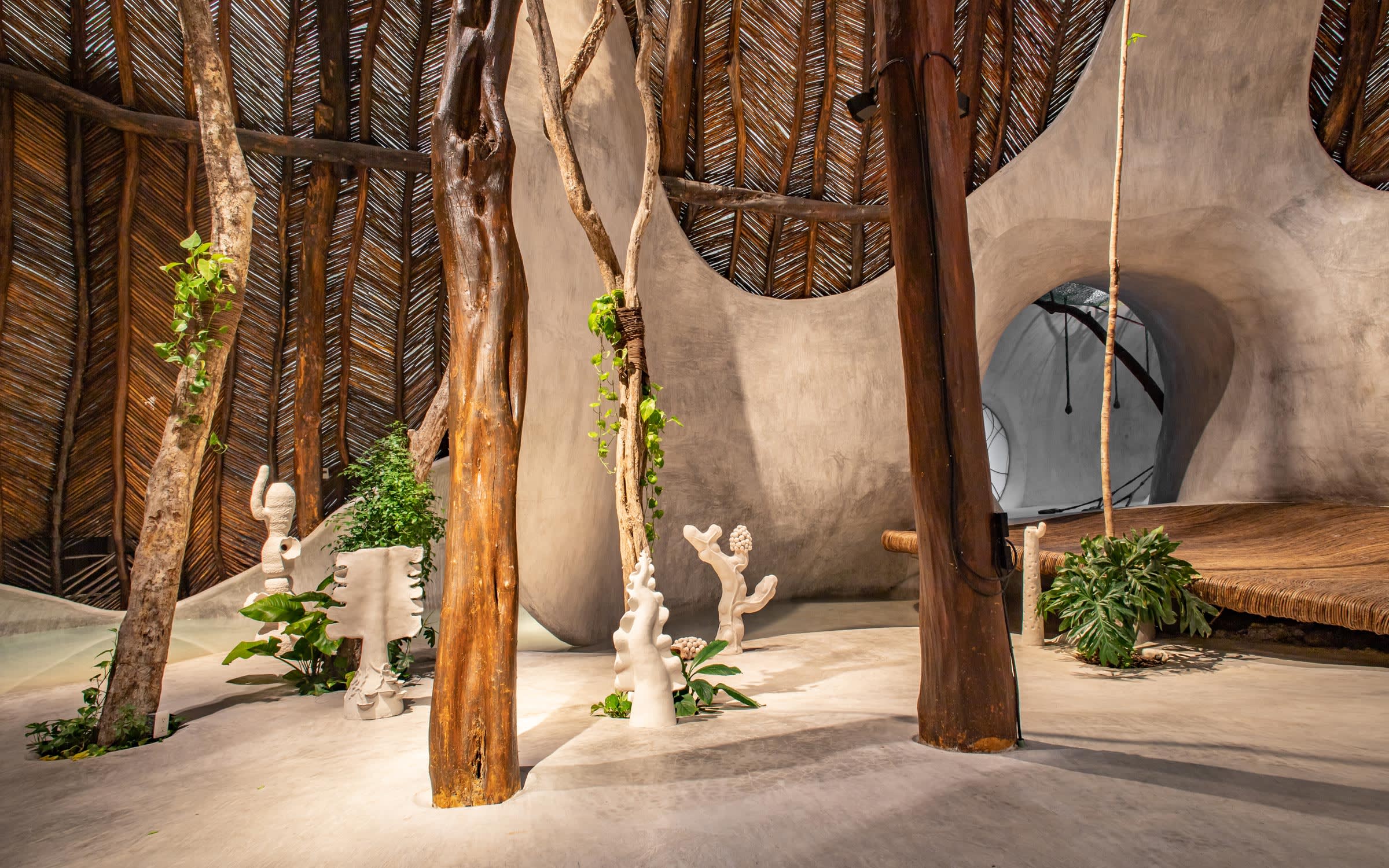As David Wallace-Wells prepares for this afternoon’s talk, discover how artists are grappling with the issue of climate change
The author of The Uninhabitable Earth will be in conversation with Allison Janae Hamilton, Alexis Rockman, and Sonia Succar Ferré
登入並訂閱巴塞爾藝術展專題故事
Magnetic blue waves hitting Tulum shores have long turned murky brown with surges of massive seaweed mats occupying the Caribbean Sea; brutal fires in the Amazon rainforest have destroyed wildlife and flora at grave scales. In addition to raising their voices on social matters such as justice and identity, many contemporary artists and institutions refuse to remain silent about pressing environmental issues, particularly in reaction to the current government’s perpetual disregard of the subject’s alarming urgency. Aware of environmental decline’s long-term effects on future generations, a growing number of artists underline the importance of altruism for catastrophes impacting remote parts of the globe as much as those with direct hurdles in their daily lives.
Environmental decay in the Caribbean Sea is also the subject for the group exhibition ‘ALLIGA’ at Tulum’s SFER IK (an interdisciplinary, avant-garde exhibition space), where works by Cecilia Bengolea, Sissel Tolaas, Ernesto Neto, and Aki Inomata meld into the museum’s mesmerizing architecture that mixes wooden log paths with winding concrete walls. Berlin-based Tolaas created a scent piece smeared across the museum’s two separate walls, where smells extracted from the region’s clean and seaweed-contaminated waters urge viewers to face environmental decline firsthand. ‘We created conditions of seaweed overgrowth with insufficient sewage systems, Amazon fires and unconscious agriculture,’ explains exhibition curator Claudia Paetzold, who plans to raise public awareness with workshops on sargassum growth throughout the exhibition. The seas’ central role for life in and outside water is also emphasized in Swiss artist Claudia Comte’s underwater installation The Cacti Series, following a TBA21-Academy residency at Alligator Head Foundation in Portland, Jamaica. The artist installed her durable concrete sculptures in East Portland Fish Sanctuary to allow coral growth and accommodate underwater habitat, including divers who are the sole human viewers of the exhibition, which delivers a striking commentary on biodiversity in marine life.

Recent MacArthur Fellowship winner Trevor Paglen’s focus has been to draw attention to the impact that human effort can have on the environment despite the smallness of our species in the larger scheme of the cosmos. The Berlin-based artist collaborated with the Nevada Museum of Art to launch satellite Orbital Reflector into the nocturnal sky on December 3, 2018, with strictly artistic purposes. The $1.5 million ‘sculpture’, made of polyethylene plastic coated with titanium dioxide, added a not-so-subtle commentary into the orbit to remind us of our formative role in this universe, until it fell out of radar range and disappeared in space.
Among artists utilizing poetic touches to address this urgent subject is San Juan-based artist duo Allora & Calzadilla, whose recent Gladstone Gallery exhibition, ‘Cadastre’, included a wash of bright yellow flowers from Tabebuia chrysantha. The duo chose the South American tree species to convey the risk that awaits the Caribbean forests due to a range of causes including colonization and global warming.
And The Aldrich Contemporary Art Museum studies changes in depictions of nature in art from romantic landscape paintings to alarming commentaries on deterioration with the group exhibition ‘Weather Report’, up now through March 29, and which includes a vast array of artists such as Nancy Graves, Andy Goldsworthy, Jitish Kallat, and Jennifer Steinkamp. The intergenerational roster of works ranges from Graves’ 1974 watercolor, graphite, and gold leaf painting Untitled (Heat Density Measurement of a Cyclone), based on early infrared satellite imagery of weather conditions, to Nick Cave’s Tondo (2018), which concocts wire, bugle beads, wood, and sequined fabric into a hypnotizing circular sculpture of the cosmos. The museum’s exhibition director, Richard Klein, organized the show upon realizing the relationship between the Earth’s weather and climate change. ‘Once my focus changed from specifically climate change to the larger and more complicated subject of the weather, the project became much more holistic, opening up to artists whose work reflected on the atmosphere in more complex and nuanced ways,’ Klein says about the necessity of an overall approach to an all-encompassing subject like climate change.
This article was originally published in Art Basel Miami Beach Magazine, available in select locations in the US.
Top image: Claudia Comte, Underwater Cacti Series, 2019. Installation view at East Portland Fish Sanctuary, as part of the artist's TBA21–Academy residency at the Alligator Head Foundation in Portland, Jamaica. Photo by F-Stop Movies, 2019. Courtesy of the artist and TBA21–Academy.

